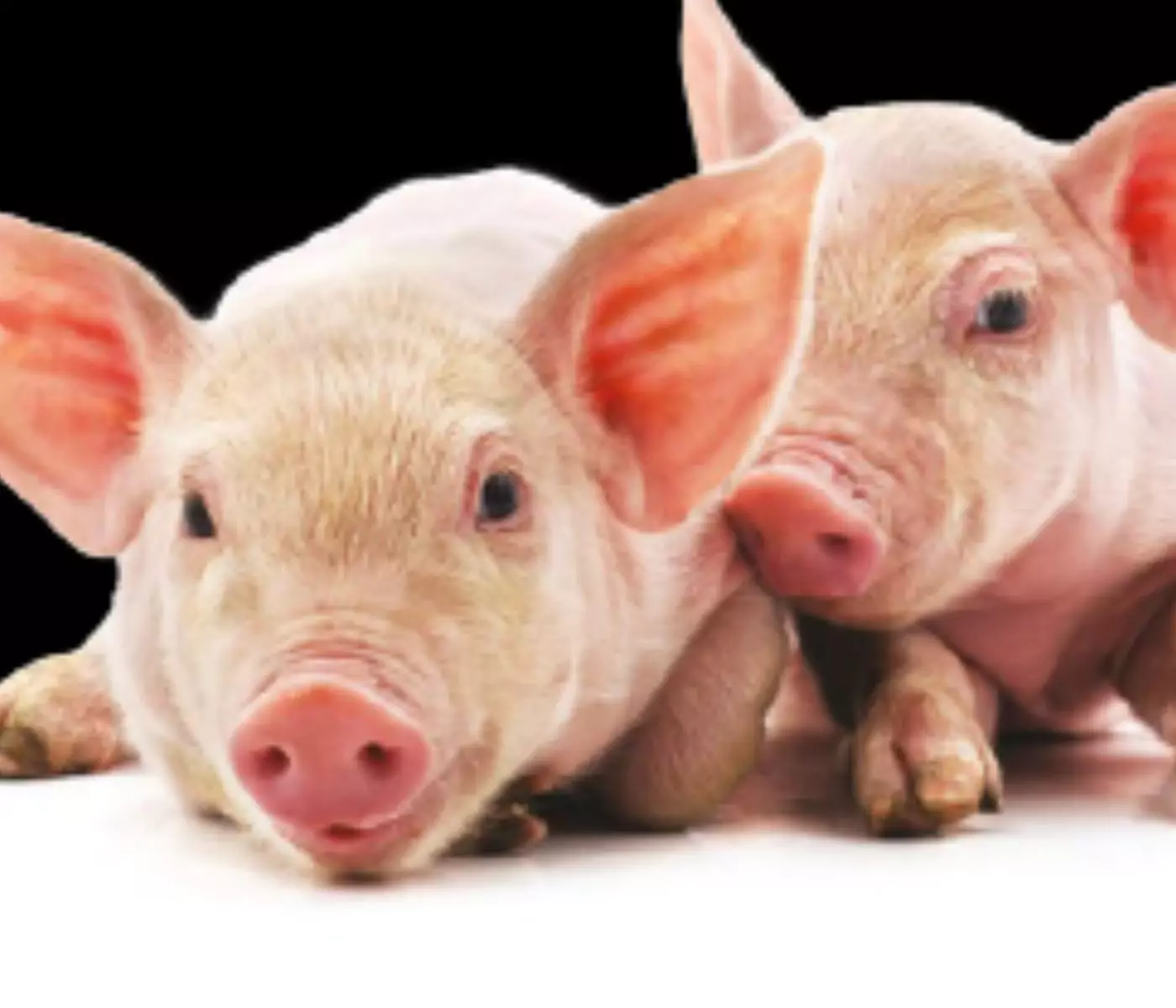Vitamins for Swine Health, Welfare, and Productivity
Last year, we released a new book called Optimum Vitamin Nutrition for More Sustainable Swine Farming. This book contains the most updated research-based information on vitamins for swine. The five chapters describe the multiple effects that vitamins can have in diverse aspects of pig farming. Chapter 5 summarizes vitamin recommendations from multiple scientific sources, academic groups, genetic companies, and results of recent surveys indicating current use in the Brazilian, Chinese, and USA swine industries.
Most recommendations for vitamins in swine nutrition are still based on studies conducted several decades ago. Consequently, there is a concern about whether current levels are adequate for modern pig genetics. However, this topic raises some controversy because, in some cases, the information available is unclear, and commercial interests may sometimes make the need to update recommendations less credible. Nevertheless, several reasons suggest the need to review recommendations for vitamins and other nutrients for swine periodically. The tendencies of vitamin use in the swine industry indicated that these levels are, in fact, adjusted across time.
Most vitamin recommendations for swine derived from different experiments are  expressed in concentration per kilogram of feed. In pigs, changes caused by genetic improvement geared to reducing the feed conversion ratio which have had the marked indirect effect of reducing voluntary ingestion over the last few decades (Culbertson et al., 2017; Soleimani and Gilbert, 2020). These changes do not affect pigs with the same intensity during all productive phases, nor is the effect on both sexes the same. Weaning and the post-farrowing period or early lactation are critical in pigs.
expressed in concentration per kilogram of feed. In pigs, changes caused by genetic improvement geared to reducing the feed conversion ratio which have had the marked indirect effect of reducing voluntary ingestion over the last few decades (Culbertson et al., 2017; Soleimani and Gilbert, 2020). These changes do not affect pigs with the same intensity during all productive phases, nor is the effect on both sexes the same. Weaning and the post-farrowing period or early lactation are critical in pigs.
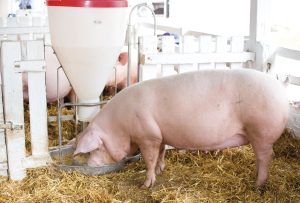
There has been a marked increase in the productive capacity of the animals, ever approaching the physiological limit. As productivity increases, more attention should be paid to the supply of the different nutrients to avoid imbalances. However, genetics continue to evolve (Culbertson et al., 2017; Lozada-Soto et al., 2022). We are on the threshold of a revolution thanks to the massive application of techniques based on molecular biology. It will, therefore, be necessary to take the conditions for the optimization of feed formulation to the limit to maintain that rate of improvement in production.
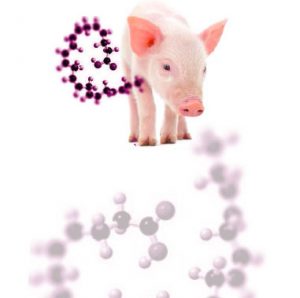 With more scientific knowledge related to physiological and metabolic processes that affect pig production, health, welfare, and behavior, nutritional studies must consider other factors besides those strictly related to nutrient deficiencies or only productive response optimization. These aspects include immune response capacity, breeder longevity, the viability of neonatal pigs, adaptation to environmental, dietary, and immunological stress, response to vaccinations, susceptibility to pathological problems, and the capacity to overcome disease or resilience.
With more scientific knowledge related to physiological and metabolic processes that affect pig production, health, welfare, and behavior, nutritional studies must consider other factors besides those strictly related to nutrient deficiencies or only productive response optimization. These aspects include immune response capacity, breeder longevity, the viability of neonatal pigs, adaptation to environmental, dietary, and immunological stress, response to vaccinations, susceptibility to pathological problems, and the capacity to overcome disease or resilience.
Nowadays, the variability among pig individuals in a herd and not only the average values in any production parameter deserve ever-increasing attention in modern swine production for precision livestock nutrition. The effects of vitamin levels on achieving precision nutrition have yet to be evaluated in sufficient depth. Different response curves for the same vitamin can be expected according to the measured parameters: growth, resistance to disease, meat quality, reproductive ability, immune response, etc. (Lauridsen et al., 2021a, b; Lauridsen, 2022).
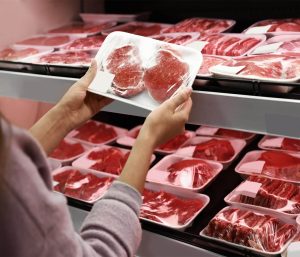 In the last few years, pork consumers have played a more active role in production and are becoming far more selective in their choices. For this reason, attention must be paid to their opinions and specific demands. Thus, aspects like diversification of production, animal well-being, the content of potentially toxic compounds or residues, fortification of food with natural compounds, etc., acquire particular relevance. Optimum vitamin nutrition in swine offers attractive alternatives that must be studied and applied appropriately.
In the last few years, pork consumers have played a more active role in production and are becoming far more selective in their choices. For this reason, attention must be paid to their opinions and specific demands. Thus, aspects like diversification of production, animal well-being, the content of potentially toxic compounds or residues, fortification of food with natural compounds, etc., acquire particular relevance. Optimum vitamin nutrition in swine offers attractive alternatives that must be studied and applied appropriately.
During the past few years, conditions in production have been modernized significantly, with improved genetics, facilities, feed manufacturing and delivery, electronic sensors, etc. The technical revolution’s consequences call for optimizing nutrition and considering all the impacts of vitamins.
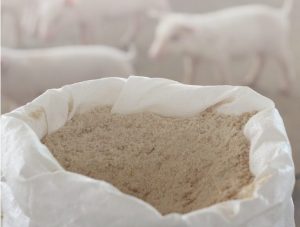
The costs of feed ingredients, including vitamins, used in pig diets are variable and, on many occasions, volatile. Therefore, the vitamin levels should also help obtain optimum economic returns in each case. In general, technical processes and large-scale industrial production mean that the production of synthetic vitamins is more efficient. So, the price of the vitamin supply is becoming proportionally lower than the other ingredients used in feed formulation. Therefore, the dietary vitamin concentration that should match the economic optimum tends to become higher, ever approaching the recommended concentration for optimum production, health, welfare, and pork quality. This fact demands special attention since only some commercial vitamin preparations or sources are of the same quality, and they are equally beneficial to the animals.
Some changes to feed guidelines, e.g., a ban on meals of animal origin, a ban on antibiotics, and other changes, are in place in several countries or will undoubtedly occur soon in many others, meaning that the entire production strategy should be reviewed. This includes rethinking housing, vaccination plans, handling, etc., and entailing re-evaluation in economic terms of the supply of different micronutrients in different phases of the productive cycle. Considering all these factors, this Optimum Vitamin Nutrition book looks at the study of vitamin requirements in swine nutrition in light of the latest discoveries for health and welfare.
Intensified production increases stress and subclinical disease-level conditions because of higher densities of animals in confined areas. Animal stress and disease conditions may increase the essential requirement for specific vitamins. Several studies indicated that nutrient levels adequate for growth, feed efficiency, gestation, and lactation might not be sufficient for normal immunity and maximizing the animal’s resistance to disease.
The adverse effect of environmental stress on a pig’s health, welfare, and performance cannot be overemphasized. Environmental stressors can cause an upsurge in stress hormone secretion, negatively affecting growth and leading to severe mortality. However, effective management techniques are crucial to raising healthy pigs and maximizing profits in the swine industry. To enhance pigs’ adaptability under stress conditions, it is essential to understand the functions of different vitamins and the appropriate dosage in pig diets to alleviate stress. The synergistic effects of various vitamins and minerals could promote growth performance and reduce environmental stress in pigs (Liu et al., 2016; Feng et al., 2017).
 Diseases or parasites affecting the gastrointestinal tract will reduce the intestinal absorption of vitamins from dietary sources and those synthesized by microorganisms. If they cause diarrhea or vomiting, they decrease intestinal absorption and increase vitamin needs. Vitamin A deficiency is often seen in heavily parasitized animals that supposedly receive adequate vitamins (Bebravicius et al., 1987).
Diseases or parasites affecting the gastrointestinal tract will reduce the intestinal absorption of vitamins from dietary sources and those synthesized by microorganisms. If they cause diarrhea or vomiting, they decrease intestinal absorption and increase vitamin needs. Vitamin A deficiency is often seen in heavily parasitized animals that supposedly receive adequate vitamins (Bebravicius et al., 1987).
Any disease that includes bleeding of the intestinal wall increases both vitamin loss and vitamin requirements for tissue regeneration. Likewise, a condition that causes a loss in appetite and feed intake increases the need for vitamins per unit of feed consumed to meet daily body needs. Diseases that adversely affect the integrity of the intestinal wall may interfere with vitamin A conversion from carotene and increase the animal’s vitamin A needs. The transformation of vitamin D to its functional forms in the liver and kidney would be affected by diseases of these organs (Arnold et al., 2015).
Mycotoxins are known to cause digestive disturbance, such as vomiting, diarrhea, and internal bleeding, and interfere with the absorption of dietary vitamins A, D, E, and K (Surai and Dvorska, 2005). Mouldy corn containing mycotoxins have been associated with deficiencies of vitamin D (rickets) and vitamin E, even though these vitamins were supplemented at levels regarded as satisfactory (Van Heugten, 2000).
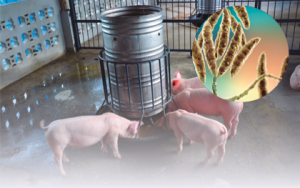
Vitamin C has been found to promote vitamin D metabolism and is also known to counter the effects of multiple stresses (Cantatore et al., 1991; DeLuca, 2014). Heat stress depresses feed intake, immunity, sow livability, and reproductive performance in pigs (Horký et al., 2016; Feng et al., 2021). Ascorbic acid supplementation has improved these traits (Sosnowska et al., 2011). Ascorbic acid (250 mg/kg) can also alleviate nutritional stress. Adenkola et al. (2009) showed that ascorbic acid modulates the body temperature of pigs by decreasing the maximum rectal temperature value and may alleviate the adverse effects of the thermal or transportation stress on the health and productivity of pigs during the cold-dry season or hot, dry season (Asala et al., 2010).
 Although vitamin C is commonly associated with alleviating the effects of heat stress in pigs (Feng et al., 2021), there is evidence that combination with vitamin E can also play a vital role in minimizing the adverse effects of stress in growth, sow, and boar reproductive ability (Sahin et al., 2001; Horký et al., 2016; Liu et al., 2016). Selenium supplementation can also be combined with these antioxidant vitamins to improve their efficacy in coping with stress (Oldfield, 2003).
Although vitamin C is commonly associated with alleviating the effects of heat stress in pigs (Feng et al., 2021), there is evidence that combination with vitamin E can also play a vital role in minimizing the adverse effects of stress in growth, sow, and boar reproductive ability (Sahin et al., 2001; Horký et al., 2016; Liu et al., 2016). Selenium supplementation can also be combined with these antioxidant vitamins to improve their efficacy in coping with stress (Oldfield, 2003).
In the past few years, several research reports have confirmed that almost all vitamins may directly improve the gut health of pigs during stressful periods like weaning. Positive results have been observed when supplementing piglet or sow diets with β-carotenes (Li et al., 2021), lycopene (Meng et al., 2022), vitamin D (Zhang et al., 2020; 2021; Zhao et al., 2022), ascorbic acid (Trawińska et al., 2012), niacin (Liu et al., 2021; Feng et al., 2021), folic acid (Wang et al., 2021b), and choline (Qiu et al., 2021; Zhong et al., 2022). All these vitamins can improve intestinal immunity, enhance gut antioxidant status (Xu et al., 2014), modulate gut microbial communities, and stimulate mucosa development and intestinal barrier functions in weaned piglets or sows, enhancing their health and welfare.
The apparent, direct effect of vitamins on gut microbiome had not received much attention until recent years in literature related to health and welfare. This large body of scientific evidence supports the statement that vitamins are essential for health (Lauridsen et al., 2021a; Matte and Lauridsen, 2022). Vitamins can enhance animal host and gut microbiota metabolism to obtain favorable outcomes for the health and growth of pigs (Stacchiotti et al., 2021). In pigs, weaning could be the most critical period in life and where most of the genetic growth potential is at risk. Vitamins can support a more manageable transition during weaning.

The previous effects and many others are described with more details and data in this book that we recommend to our readers at NutriNews International.
References are available upon request.

